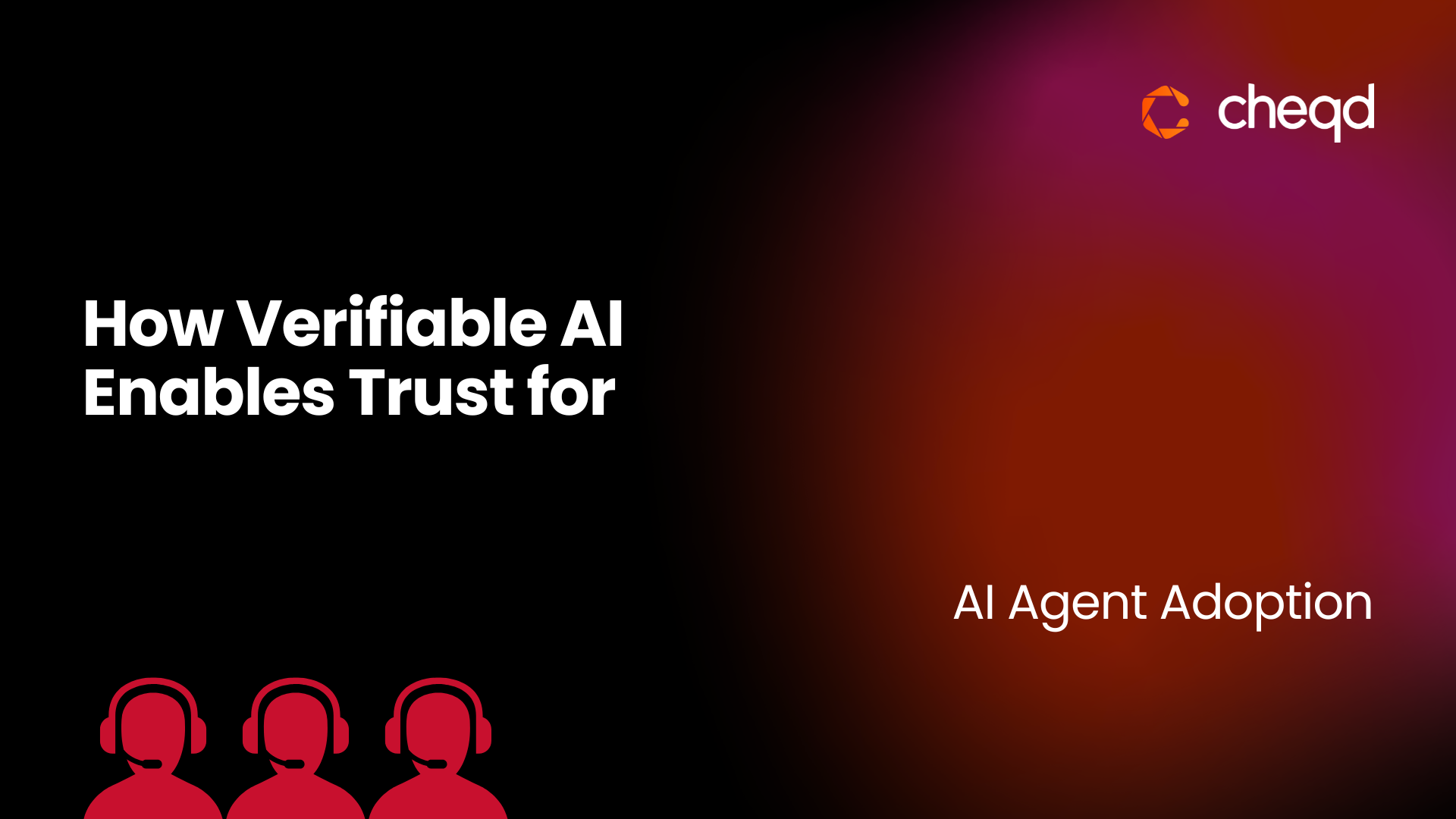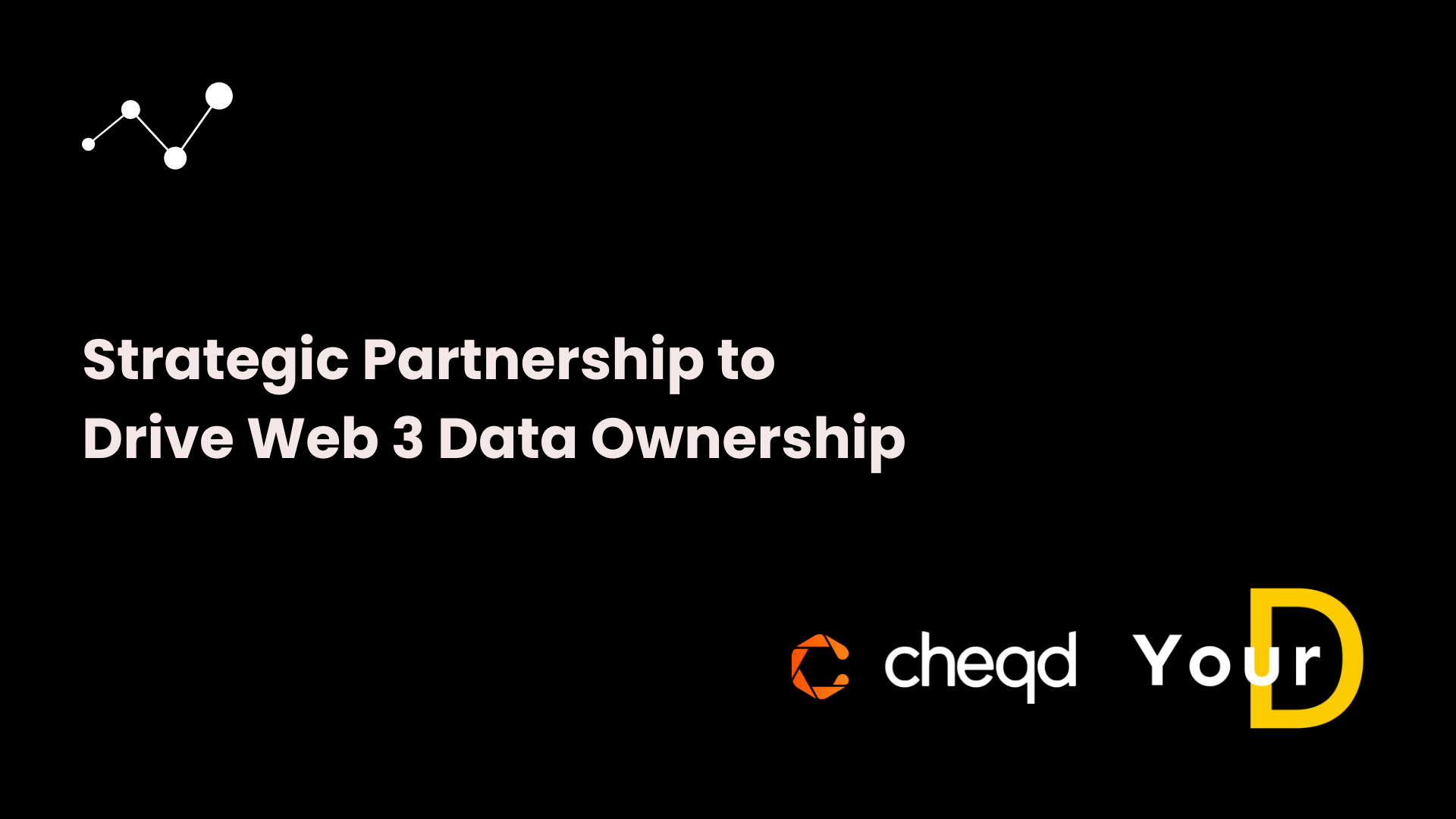Artificial intelligence is sweeping across the internet and dominating news headlines. The promise of change is colossal. Yet, this promise is tempered by a deeply rooted challenge: trust. An uncomfortable truth is overwhelming the society despite the fact that AI agents have taken on roles ranging from junior, senior, to critical decision makers — Shall we trust these agents? How can we verify that they are acting in our best interest, without hidden agendas or biases? Apparently, we need a solution that builds trust or confidence in AI’s actions. This is where the concept of Verifiable AI comes into play, bridging the gap between innovation and trust.
The Trust Issue in AI Agents
The mechanisms behind AI decisions often remain like a black box. Without clarity on how these agents interpret information and provide solutions, we find ourselves navigating a maze of uncertainty. Verification is crucial.
1. Lack of Transparency and Accountability in AI Decision-Making
One of the most distressing concerns with AI agents lies in the lack of transparency and accountability in their decision making processes. In some cases, even the system creators struggle to explain how their algorithms reach certain conclusions. Take Google’s AI, for example, which was supposed to help with hiring by looking at patterns from past hiring decisions. But it turned out that the AI was unintentionally favoring male candidates over equally qualified women, all because the data it was trained on was biased. Similarly, Uber’s self-driving cars, which were hailed as the future of transportation, were involved in a tragic accident in 2018, exposing the potentially fatal consequences of unaccountable AI systems. These instances show the real problem: we don’t have reliable ways to track or fix AI decisions, making it hard to hold these systems responsible when they fail.
2. Data Privacy, Security, and Ethical Concerns
The digital landscape is flooded with concerns surrounding the security and privacy of personal data handled by AI agents. As we laid out in previous blogs, the AI information supply chain starts with massive datasets feeding and training, often involving sensitive personal information. If that data gets leaked, the fallout could be huge, given how much data is involved. Let’s look at some real life examples. Meta (Facebook) ran into legal trouble for using people’s personal data to train its AI. A privacy group in Europe, NOYB, filed complaints saying Meta violated the GDPR by using people’s data without their consent. This created a snowball effect, leading to 11 more complaints filed with national authorities, all demanding that Meta halt this practice. Similarly, while Boston Dynamics’ robots were breaking new ground in technology, there were concerns about how these robots could be used to spy on people or for other bad reasons. In both cases, we’re left wondering how much control we really have over the data we share and whether AI agents are acting ethically or just pushing other agendas.
3. Regulatory and Legal Uncertainty
As AI keeps growing, it’s running into a lot of legal and regulatory challenges. Take Clearview AI, for example — a facial recognition system that’s been used without people’s permission. It’s stirred up a lot of debate about privacy and surveillance. Then there’s deepfake technology, which can make videos that look incredibly real, showing people doing or saying things they never actually did. This has raised big concerns about fake news and manipulation. These technologies are in a sort of legal gray area, with laws struggling to keep up with how fast things are changing. And all this uncertainty makes it even harder to trust AI, because people are left wondering: who’s responsible when AI does something wrong or invades privacy?
4. Limited Verification of AI Claims
Another striking challenge with AI is how hard it is to verify the claims these systems make. In many cases, AI solutions are sold with big promises, but when the infrastructure is being examined, those promises don’t always hold up. Take Babylon Health, for instance. This digital health company claimed that its AI powered chatbot could diagnose medical conditions as precisely as a doctor. Nonetheless, when independent experts checked it out, they found that the system often gave wrong or misleading diagnoses, which raised serious concerns about patient safety. This illustrates how risky it can be when AI systems make unverified claims, especially in high stake fields like healthcare. As more AI companies emerge, it’s crucial to set up solid ways to test these systems to make sure they actually work as promised and aren’t pushing dangerous, unproven tech.
All these challenges add up to a real mess of trust issues when it comes to AI agents. Without mechanisms to address transparency or accountability, it is hard to keep users loyal to the solution, as they would remain hesitant to place their faith in systems they cannot fully rely on. It’s therefore imperative to make AI actions traceable and verifiable. We need a system that guarantees our best interests, that is not working against us. That’s where Verifiable AI comes in.
What is Verifiable AI?
Verifiable AI (vAI) ensures that AI agents can prove the authenticity, integrity, and source of their actions, decisions, and outputs. Unlike traditional AI systems, which operate as “black boxes” with little transparency, Verifiable AI leverages technologies such as verifiable credentials, zero-knowledge proofs, trust registries, and cryptographic attestations to create audit trails that can be independently verified.
In essence, Verifiable AI allows users to answer critical questions: Who created this AI? What data was it trained on? Can its decisions be traced and verified? By embedding mechanisms for proof and validation, Verifiable AI transforms AI agents from opaque, unaccountable entities into transparent and trustworthy participants in the digital ecosystem.
How Verifiable AI Enables Trust for AI Agent Adoption
Verifiable AI leverages a combination of Decentralised Identifiers (DIDs), Verifiable Credentials (VCs), Trust Registries, and Zero Knowledge Proofs (ZKPs) to provide immutable records of AI agent behavior. These technologies enable AI agents to prove the authenticity of their decisions without revealing sensitive data.
1. Decentralised Identity
- Each AI agent is issued a unique Decentralised Identifier (DID), enabling it to authenticate and interact with other entities in a trustless manner.
- The DID is anchored on a blockchain or other distributed ledger, ensuring that identity claims cannot be tampered with.
- Example: An AI trading bot in DeFi can use a DID to sign transactions, proving it was the authorised entity executing trades.
2. Verifiable Credentials
- AI agents can issue and verify cryptographically signed credentials, proving they are trained on specific datasets or adhere to ethical AI guidelines.
- These credentials can be issued by trusted authorities, such as regulators, AI research institutions, or independent auditors.
- Example: A healthcare AI diagnosing patients can present a VC signed by a regulatory body, confirming that its training data meets compliance standards.
3. Trust Registries
- A Trust Registry is a database that maintains lists of verified AI agents, credential issuers, and auditors; referencing the entities with DIDs and representing the trusted relationships between the entities with verifiable credentials.
- AI agents can query Trust Registries to verify whether another AI, organisation, or individual is trustworthy before engaging in transactions.
- Example: A financial institution wants to integrate an AI risk assessment tool. Before deploying it, the institution queries a Trust Registry to confirm that the AI has received compliance credentials and permission from a certified regulatory body.
4. Zero-Knowledge Proofs
- AI agents can prove they have followed predefined rules or used certified data without exposing the data itself.
- This allows for privacy-preserving verification, critical in industries like finance, law, or medicine.
- Example: A compliance AI in banking can prove it did not use blacklisted customer data without revealing the full list of transactions it processed.
Audit Trails: Tracking AI Actions, Decisions, and Outcomes
A core aspect of Verifiable AI is auditability, providing a transparent history of AI actions, from data ingestion to final decisions. This ensures that AI models operate accountably and fairly.
Example: AI in Content Creation
- AI generated content, such as deepfake videos or AI articles, raises trust concerns.
- Verifiable AI ensures:
- Authenticated source tracking: AI generated content carries a cryptographic proof linking it to its original dataset and creation process.
- Tamper-proof content provenance: Content is timestamped and stored on decentralised ledgers, ensuring it wasn’t altered post publication.
- A journalist uses an AI assistant to generate news articles. The AI attaches a cryptographic signature, allowing readers to verify the source materials used and prove that the content hasn’t been manipulated.
Verifiable AI: Proof of Trust
Trust is the currency of progress. Without it, AI adoption will be hindered. Despite AI agents quickly taking on roles like managing finances and giving medical advice, it’s not enough for them to just be impressive. They need to prove their actions. Proof that these systems are acting transparently. Verifiable AI is that proof. It shifts AI from an era of blind trust and black box decisions to one where every claim can be validated, every action can be traced, and every agent can be held accountable.



